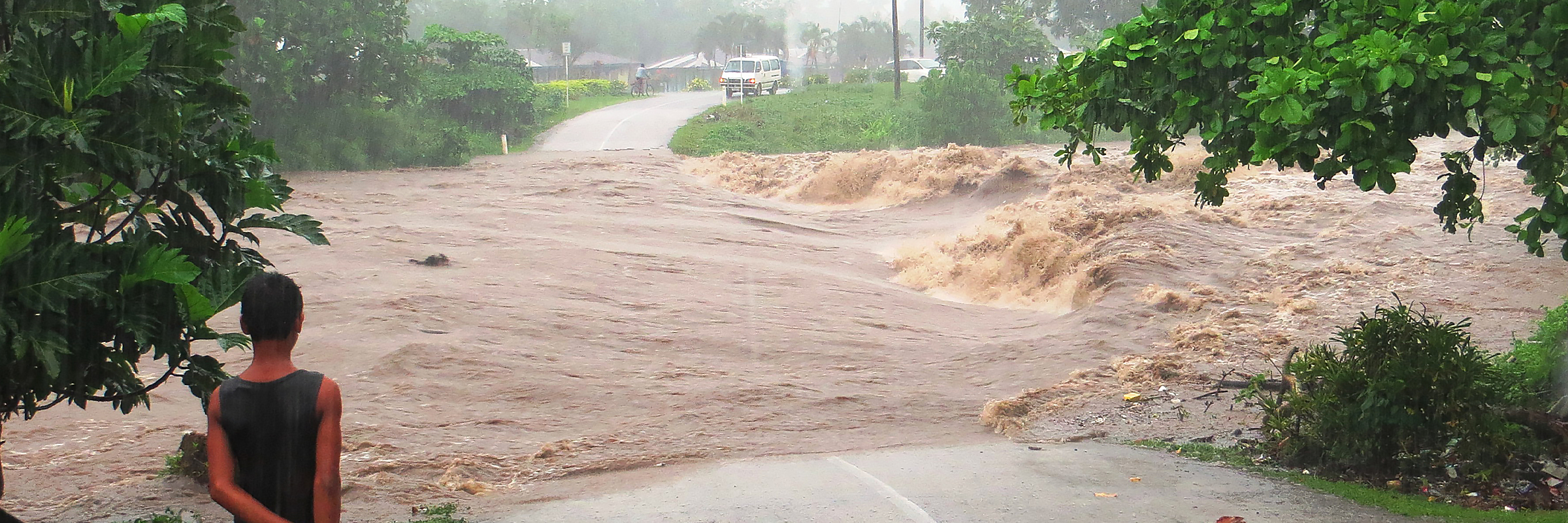

Challenge
The Samoan Road network is critical to the country’s economic development, providing remote communities with access to life saving social services and commerce. The Samoa road network faces a range of vulnerability issues including:
- Coastal exposure to sea-level rise, storm surges, extreme weather events
- Inland flooding and landslips during extreme rainfall
- Damage from earthquakes
- Accelerated pavement deterioration due to extreme weather and rising water tables
Communities already content with frequent outages across the road network due to frequency of these events. Vulnerable locations are often rendered impassable due to flooding, debris deposit, culvert, bridge, and pavement damage.
Approximately 70 percent of Samoa’s population lives within one km of the coast with critical infrastructure, (such as hospitals, schools, places of employment, tourist infrastructure, port facilities, power plants, airports, and roads) all located primarily in this coastal zone. Expected climate change effects such as the combination of rising sea levels and more intense tropical cyclones, will place these coastal assets and communities at even higher risk.
Solution
The Government of Samoa worked with donors to support its climate change initiatives and requested assistance from The World Bank through the Enhancing the Climate Resilience of the West Coast Road (CRWCR) project. SMEC’s role was to support the project goals by preparing a detailed assessment of road transport vulnerabilities and develop a robust strategy to increase climate resilience across the road network.
To support the goals of the CRWCR project, SMEC was appointed to assess asset conditions and then develop an appropriate strategy to help the road network adapt.
Climate Change and Natural Hazard Vulnerability Assessment
- Identification of high-risk and priority geographical areas.
- Identification of future key hazard types and risk levels (e.g. high tide wash, sea-level rise, tropical cyclones, extreme rainfall and temperature events, tsunamis, etc.) in Samoa.
- Assessment of the likely severity and frequency of risk impacts for all major links on the road network.
- Impact assessment on the loss of connectivity in priority areas.
Road Network Adaptation Strategy
- Identification of adaptation options that responded to the assessed vulnerabilities. Solutions proposed needed to be technically feasible and appropriate in the Samoa context.
- Development of a prioritized program of investments at specific locations to improve the resilience of the road network.
- Preparation of tools to assess the vulnerability of road assets, including methodologies for determining the adequacy of existing roads to resist climate impacts.
- Review of road planning processes, including institutional and legislative frameworks, national road construction standards, maintenance (routine, periodic and emergency) methods, and related processes. SMEC then assessed their adequacy in the light of projected climate change and natural hazard vulnerability.
- Review of the institutional and legal framework as relevant to the implementation of Climate Change Adaptation and Disaster Risk Management

The Government of Samoa, The World Bank
Samoa




